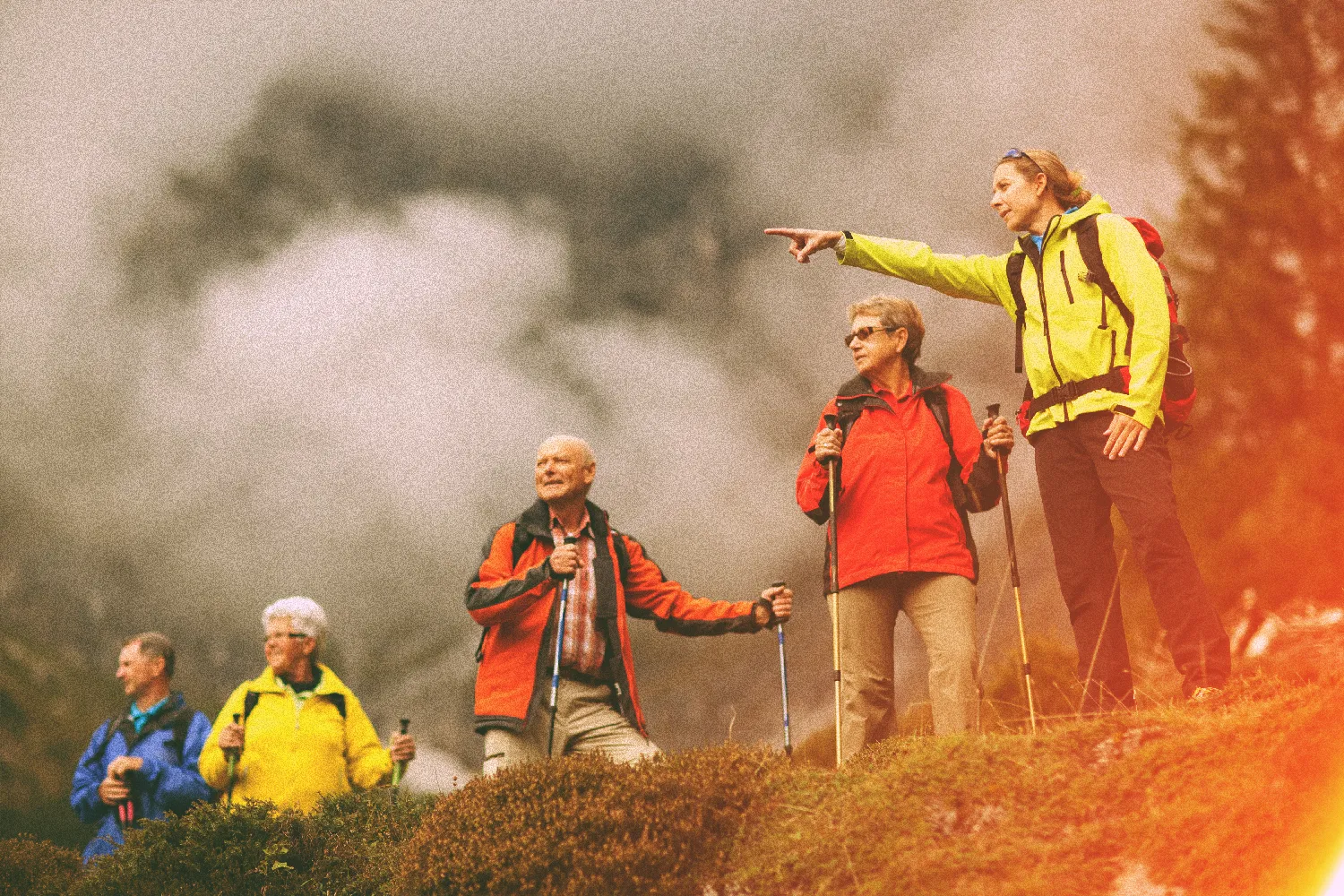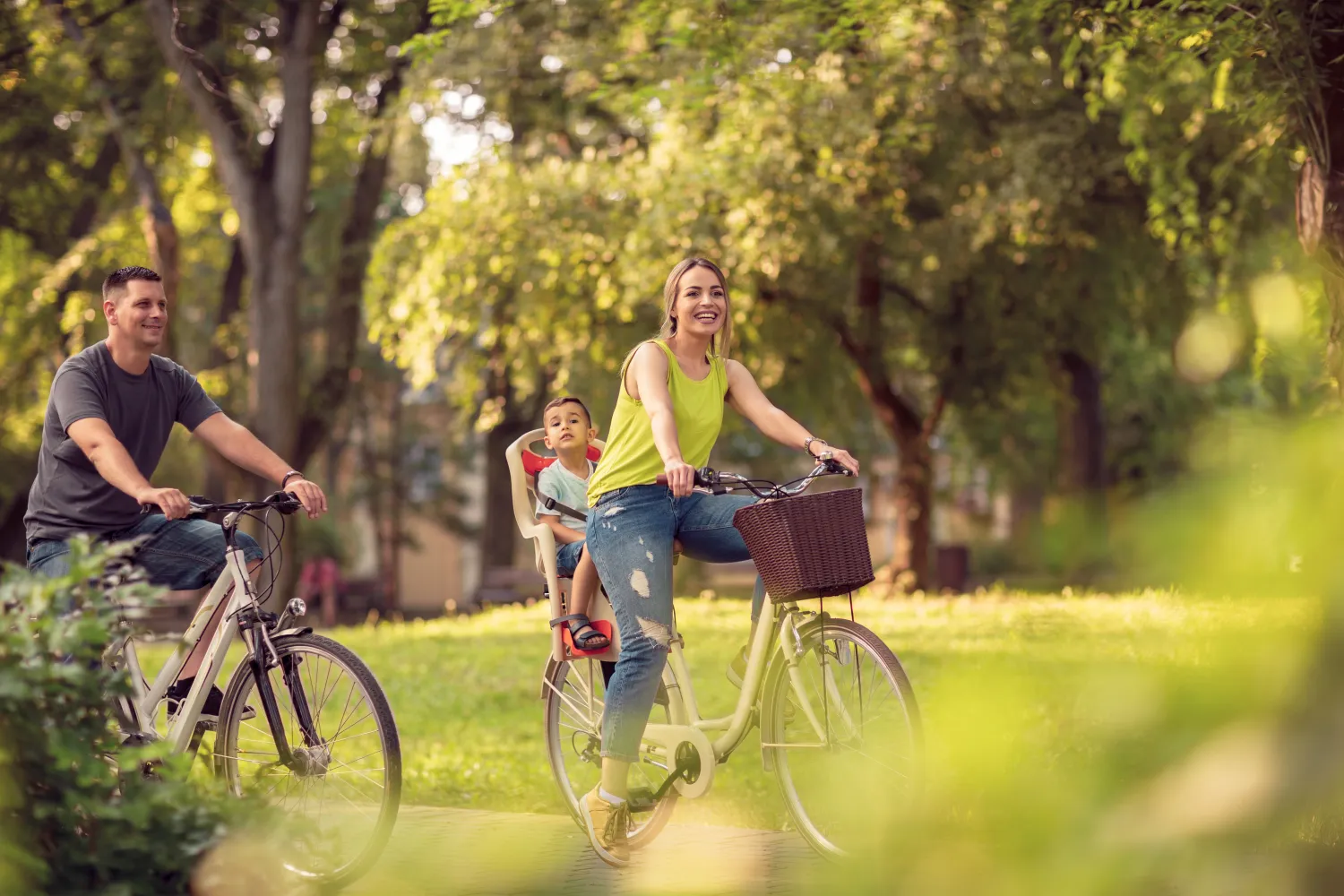For many cyclists, the transition to autumn, with its more frequent rain, leaf-covered roads and cold temperatures, can mean less regular cycling and a less pleasant time.
If you want to continue practicing your passion in complete safety, follow these few tips.
Keep warm and dry on your bike tour
One of the most puzzling features of autumn is the return of cool weather, combined with the heat of some afternoons. Over the course of a single day, temperatures can vary from 10 to 15°C.
To overcome this problem, the most effective solution is to dress in multi-layers so that you can easily modulate them and adapt to the temperatures felt throughout your bike ride. Depending on the thermometer, you can put on one or two long-sleeved T-shirts (made of synthetic fibers, which soak less than cotton), and top them off with a windbreaker, a waterproof jacket and waterproof shoes and panniers.
When it comes to rainwear, choose brightly-colored garments with reflective strips.
Finally, pay particular attention to the areas most sensitive to the cold, such as hands and ears, and protect them with appropriate accessories.
A word of advice in any case: to avoid any surprises, be sure to check the weather forecast just before you leave!
Stay visible at night and in bad weather
The cloudy, rainy skies of the autumn months don’t offer optimal lighting conditions, and with shorter days, you’re likely to find yourself cycling in semi-darkness.
To protect yourself from the additional dangers of poor visibility, as a cyclist you are obliged to follow the regulations of the Code de la sécurité that deal with this issue.
Your bike must have one or more visible reflectors, red at the rear, orange on the pedals, white at the front, and tires fitted with approved retro-reflective devices.
If you cycle at night, it’s essential to have a front position light with a yellow or white light and a rear position light that’s clearly visible.
As for tires, some come with reflective strips around the rim, which is great for increasing your visibility. For added safety, we also recommend wearing a fluorescent vest.
For cyclists with trailers, two red reflectors at the rear, placed as far apart as possible, are compulsory.
To make you even more visible, we strongly recommend combining it with a reflective strip applied across the entire width of the trailer, and a red reflector on the rear of the child seat.
Beware of fallen leaves and puddles
When riding in the rain, avoid as far as possible smooth surfaces, railroad tracks and manhole covers, which turn into real ski slopes as soon as it rains a little too much.
Be vigilant and keep your eyes on the ground at all times to avoid puddles of water or numerous fallen leaves, which are particularly slippery and can hide stones, holes or any other obstacle likely to cause falls.
As far as possible, and to avoid such incidents, always drive in clear lanes and watch out for potholes (numerous in some streets), irregularities in the asphalt or ill-fitting manhole covers, for example.
Clean and maintain your equipment after every ride
Rain, mud and cold can be hard on your bike, causing corrosion and damage over time. To limit wear and tear and keep your bike running smoothly, be sure to clean and maintain it after each use (wheels and any parts on which mud may have splashed).
Don’t leave it in the rain, and always try to park it indoors to protect it from rust and erosion.
Finally, a tip that applies to all seasons: have your brakes checked regularly. This will help you avoid any setbacks once you’re on a slippery slope.
Choose your bike tour itinerary carefully
Of course, the itinerary for a bike tour depends on the season and the climate.
So, while in summer we recommend cycling along the river to beat the heat, in autumn we advise you to avoid high-altitude destinations, as precipitation is much more frequent and the start and end of the day are particularly cold.
If you need advice on how to plan your itinerary, or if you’re looking for tailor-made, turnkey packages, turn to a reliable bicycle touring professional.




